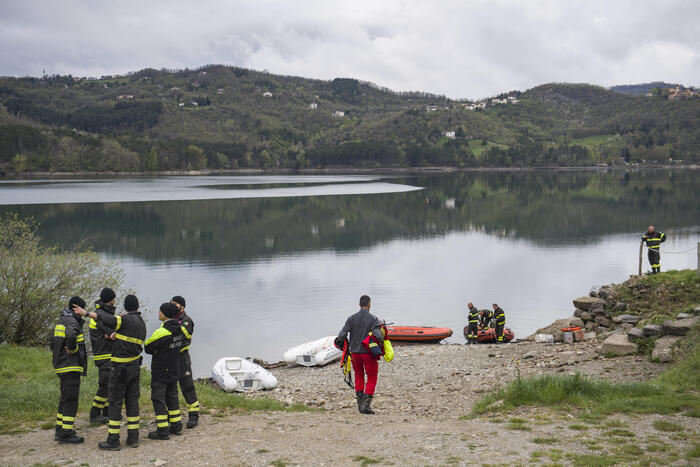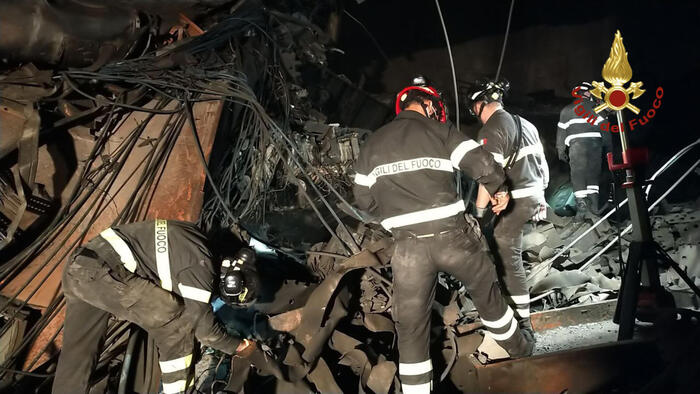The Andechs monks and hydroelectric power
Created: 08/14/2022, 09:02
By: Andrea Graepel
Ruins in the forest: chronicler Father Emmeran Heindl spoke of a romantic impression, which the remains of the wall still make today.
The water house can be seen at the top left behind the trees, which is right on the path.
© Photographer: Andrea Jaksch
The Andechs monks used hydropower for their own purposes early on – and not just them.
The remains of a mill wall can still be seen below the monastery.
And an old water house through which brewing and service water was pumped to the monastery for a long time.
Andechs
– Thousands know the way, thousands have passed the white house at some point on this way through the Kiental, which stands at the foot of the first staircase up to the monastery – and perhaps wondered about the meanwhile picturesque remains of the wall directly below at the watercourse.
In any case, they are not castle remains from the time of the Andechs-Meranians.
They are relics of an early ecological and sustainable use of hydropower.
If you look closely from the Klosterberg in the extension of the first ascent to the left past the Klostergasthof, you can still see the route that leads down to the remains of the wall.
The heavy wooden beams were transported up from the Kiental via this path.
The Erling-Andechs local history association has a whole series of old chronicles from the monastery on the shelves that deal with the topic of water from the Kienbach.
From the records, which club chairman Karl Strauss and Alfons Echter could blindly grab from the shelves, it emerges that the monks have been using the hydroelectric power from the Kienbach for a long time.
In a donor letter from Duke Albrecht II, "Mühllehen mit Mühlschlag" were given to the monastery as early as April 10, 1458.
In 1511 Abbot Johann II renovated the mill.
To this day, the story cannot be completely unraveled, even if the monks meticulously wrote chronicles.
The monastery owned this right to mill until secularization in 1803. After that, the mill, which passed into private ownership, was converted into a cutting saw.
In 1891, the owner at the time, postmaster Johann Panzinger, sold it to the organ builder Beer from Erling. For the two Erlingers, the sale to an organ builder made sense: "He always needed wood." In the 1920s, the sawmill went into the possession of a certain Schönberger.
It is not known when operations ceased.
Old photographs show craftsmen building or repairing the waterfall bridge, which leads directly to the dam wall over the Kienbach, dated 1893.
And there is an oak tree that still exists today.
A part anyway.
This spring it was trimmed down to the fuselage.
The Erlingen local researchers can remember that the wayside shrine was already there when they were children.
It's still there.
It was probably felled for traffic safety reasons, after all the highly frequented hiking trail leads right past it.
Incidentally, the route from Herrsching up to Andechs has only existed since 1853.
Much older than the sawmill is a kilometer-long water pipe made of Teuseln, pipes made of pierced logs.
Construction began in 1676 and was not completed until 1687 after a few years of laborious construction.
Architect court master builder Marx Schinnagl, at the same time water attendant at the electoral court, was quite sure.
The water from this spring in Kerschlach was transported through the white house above the remains of the wall on the way, the Andechser Wasserhaus, to the Klosterberg with a piston pump driven by water power.
"The big water wheel is still there," says Strauss.
In 1854 the line south of Erling was rerouted east of the Kienbach.
And in 1884 all the piping was replaced with cast iron.
Since the 1920s, the brewing and drinking water has come from a spring at the monastery pond.
Bathers therefore had no business there and were expelled.
A topic that was even worth reporting in the Austrian daily newspaper Linz in 1928.
Strauss came across the text by accident on the Internet.
Bathers were warned of broken glass: "Long live the Andechser beer and the Erlinger morality resting on a foundation of broken glass." After the monastery was connected to the national drinking water network, no one drives bathers away anymore.









